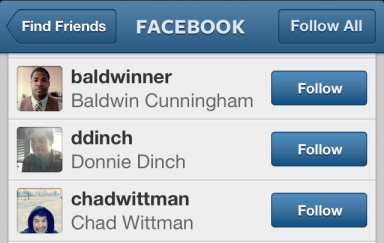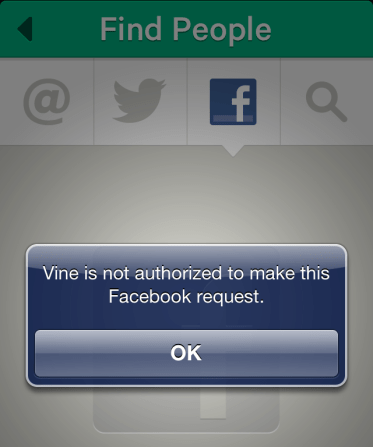RESEARCHERS MAP THE SEXUAL NETWORK OF AN ENTIRE HIGH SCHOOL
COLUMBUS, Ohio – For the first time, sociologists have mapped the romantic and sexual relationships of an entire high school over 18 months, providing evidence that these adolescent networks may be structured differently than researchers previously thought.
The results showed that, unlike many adult networks, there was no core group of very sexually active people at the high school. There were not many students who had many partners and who provided links to the rest of the community.
Instead, the romantic and sexual network at the school created long chains of connections that spread out through the community, with few places where students directly shared the same partners with each other. But they were indirectly linked, partner to partner to partner. One component of the network linked 288 students – more than half of those who were romantically active at the school – in one long chain. (See figure for a representation of the network.)
James Moody, co-author of the study and professor of sociology at Ohio State University, said this network could be compared to rural phone lines, running from a long main trunk line to individual houses. As a comparison, many adult sexual networks are more like an airline hub system where many points are connected to a small number of hubs.
While many students were connected to much larger networks, they probably didn’t see it that way, Moody said. In fact, they probably had no idea of their connections to the network. “Many of the students only had one partner. They certainly weren’t being promiscuous. But they couldn’t see all the way down the chain.” |
“We went into this study believing we would find a core model, with a small group of people who are sexually active,” Moody said. “We were surprised to find a very different kind of network.”
The results have implications for designing policies to stop the spread of sexually transmitted diseases among adolescents, he said.
The study was conducted by Peter Bearman of Columbia University, Moody, and Katherine Stovel of theUniversity of Washington. The results were published in a recent issue of the American Journal of Sociology.
The researchers used data from the National Longitudinal Study of Adolescent Health. As part of that study in 1995, researchers interviewed nearly all students at an unidentified Midwestern school that they renamed “Jefferson High School.” It is an almost all-white school, and is the only public high school in this mid-sized city, which is more than an hour away from the nearest metropolitan area.
Researchers interviewed 832 of the approximately 1,000 students at the school. Students were asked to identify their sexual and romantic partners in the past 18 months from a roster of other students attending their school. (Romantic relationships were ones in which the students named the other as a romantic partner. Non-romantic sexual partners were those in which the participants said they had sexual intercourse, but were not dating).
Slightly more than half of all students reported having sexual intercourse, a rate comparable to the national average. The researchers mapped the network structure of the 573 students involved in a romantic or sexual relationship.
Moody said the results generate a snapshot of the network of romantic and sexual relations among teens attending the school in this 18-month period –- the first such image of an entire population such as this.
The most striking feature of the network was a single component that connected 52 percent (288) of the romantically involved students at Jefferson. This means student A had relations with student B, who had relations with student C and so on, connecting all 288 of these students.
While this component is large, it has numerous short branches and is very broad – the two most distant individuals are 37 steps apart. (Or to use a currently popular term, there were 37 degrees of separation between the two most-distant students.)
“From a student’s perspective, a large chain like this would boggle the mind,” Moody said. “They might know that their partner had a previous partner. But they don’t think about the fact that this partner had a previous partner, who had a partner, and so on.
“What this shows, for the first time, is that there are many of these links in a chain, going far beyond what anyone could see and hold in their head.”
Outside of this large component, there were numerous other smaller components in the network at Jefferson High. There were 63 simple pairs – two individuals whose only partnership was with each other.
All told, only 35 percent of the romantically active students (189) were involved in networks containing three or fewer students. There were very few components of intermediate size (4 to 15) students.
All told, only 35 percent of the romantically active students (189) were involved in networks containing three or fewer students. There were very few components of intermediate size (4 to 15) students.
While many students were connected to much larger networks, they probably didn’t see it that way, Moody said. In fact, they probably had no idea of their connections to the network.
“Many of the students only had one partner. They certainly weren’t being promiscuous. But they couldn’t see all the way down the chain.”
The surprising thing about the network at Jefferson High was the near absence of cycling –- situations in which people have relationships with others close to them on the network, Moody said.
The lack of cycling seems traceable to rules that adolescents have about who they will not date. The teens will not date (from a female perspective) one’s old boyfriend’s current girlfriend’s old boyfriend. This would be considered taking “seconds” in a relationship.
“If you break up with someone, you may want to get as away from them as possible in your next relationship. You don’t want to be connected to them in some way by dating someone with a close relationship,” Moody said.
The practical result from such a rule is that no cores form, and that long, chain-like networks form instead. That has important implications for preventing the spread of STDs in teenage populations, according to Moody, Bearman and Stovel.
In adult populations, in which there are cores of sexually active people who are the main conduits of disease, you can focus education and other efforts to this select group.
But in the case of adolescents, “there aren’t any hubs to target, so you have to focus on broad-based interventions,” Moody said. “You can’t just focus on a small group.”
This also means it matters less which people you reach with your efforts. Networks such as the one seen in Jefferson High are extremely fragile and just breaking one link in the chain – any link - will stop that part of the network from spreading any further. If enough links are broken, the spread of STDs can be radically limited.
“The students in this network are not unusual. They are just average students, and not extremely active sexually. So social policies that could help some of them protect themselves from STDs could break a lot of these chains that can lead to the spread of disease.”
#
Contact: James Moody, (614) 292-1722; Moody.77@osu.edu
Written by Jeff Grabmeier, (614) 292-8457; Grabmeier.1@osu.edu
Written by Jeff Grabmeier, (614) 292-8457; Grabmeier.1@osu.edu






 Reconfirming your social graph manually on other apps is awkward at worst and annoying at best. Think about it. If your Facebook account were reset and you had to send friend requests to all your old friends, how many do you think would confirm? Even your best friends might be too lazy to, and people who were glad to friend you when you met years ago probably wouldn’t bother if they remember you.
Reconfirming your social graph manually on other apps is awkward at worst and annoying at best. Think about it. If your Facebook account were reset and you had to send friend requests to all your old friends, how many do you think would confirm? Even your best friends might be too lazy to, and people who were glad to friend you when you met years ago probably wouldn’t bother if they remember you.




 New York:
New York:





